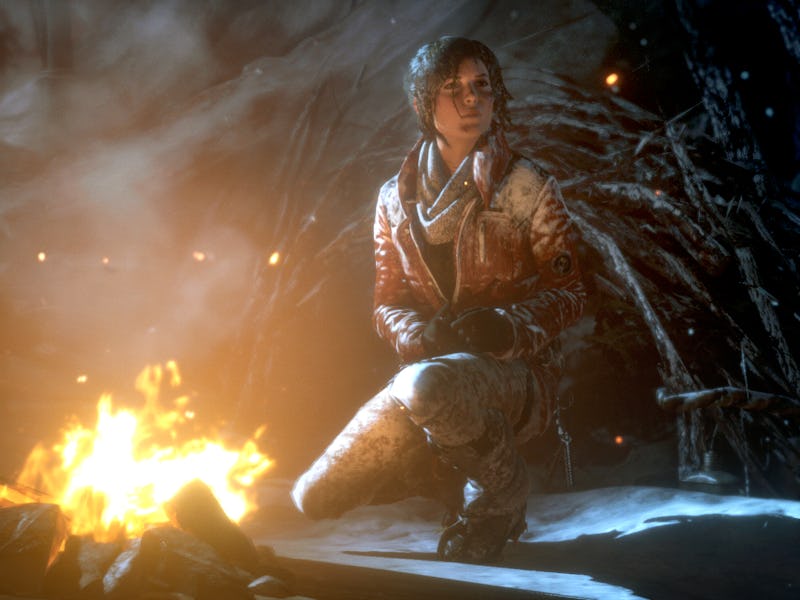Why 'Rise of the Tomb Raider' Is The Game of the Year
A complex Lara Croft in an old-school adventure brings her sequel to the top of 2015.

Gaming in 2015 should be remembered as the year of virtual reality and eSports coming to the forefront. Though independent of each other, these two trends are brewing a storm ready to wreak havoc throughout 2016. But as gaming’s future lies in the unknown, I want to believe Rise of the Tomb Raider represents how to forge new ground in the traditional and the tried-and-still true.
Rise of the Tomb Raider is a bold reminder that gaming can still be a rewarding and thrilling singular experience without an immersive headset or a packed crowd in Madison Square Garden rooting for you or booing you. (It’s worth mentioning that there was a multiplayer mode in the 2013 game, but it was removed from this year’s sequel.)
Competition was built into gaming’s ethos since Pong, but from 1976’s Colossal Cave Adventures onwards did gaming promise to be a fully-realized virtual fantasy fulfillment of diving into caves, unearthing treasure, and exploring the inexplorable. We didn’t lose sight of any adventuring spirit in 2015, as The Witcher 3 and Fallout 4 also allow us similar experiences, but Rise of the Tomb Raider simply did it so well in old school fashion.
Don’t misunderstand, there is a laundry list of modernity in Rise of the Tomb Raider. Individual weapons upgrades, some regenerative healing, and technical conveniences like autosaving are within Rise. But however modern in its approach, the game is still structured into set-pieces which function like levels with “final bosses,” evoking the cartridge and early console days of yore. Remove the treks between starting points and what you’ve got is a retro platformer running on current-gen hardware.
The metamorphosis of Lara from dual-wielding Barbie doll to a complex, troubled survivor has been a textbook demonstration of reinvention. It’s no secret that was the goal of studio Crystal Dynamics, who reintroduced Lara to the world in 2013’s Tomb Raider. But two years on and the genre world is acclimating to complex action women on a wider scale, which risks Lara losing her newfound identity. Jessica Jones, Peggy Carter, Supergirl, Rey in The Force Awakens, and more threaten to soften a hardened Lara. I had feared that Rise of the Tomb Raider would return Lara to her older attitude, but in hindsight my fear was irrational. To my relief and delight, Crystal Dynamics not only avoided reverting Lara but made her even more of a psychological maze to navigate.
Controlling a rough-around-the-edges Lara Croft who is driven irrationally by emotion, I felt an urgency I rarely feel in video games: Is this okay? Game protagonists are typically an escapist fantasy, but playing as Lara had me feeling like an enabler to an emotionally distraught individual. Exploring the Russian wilderness for ancient Greek texts was the last thing she should be doing, yet here we were inching closer and closer to the cave of a gigantic grizzly bear. I relished that a video game made me question the actions of its protagonist, where I had all of the control but still little say.
Rise of the Tomb Raider is many things most video games have stopped being. It’s stubbornly antiquated in structure and presentation, which is its greatest advantage. It’s a $60 console game with very optional DLC. It’s an adventure game, and only that, without any busy multiplayer which has been no more than an illusion for depth. Most games want to become a sport like Heroes of the Storm or a branded lifestyle like Destiny. But Rise of the Tomb Raider still values itself like a good book: More singular, more isolating, and just as thrilling.